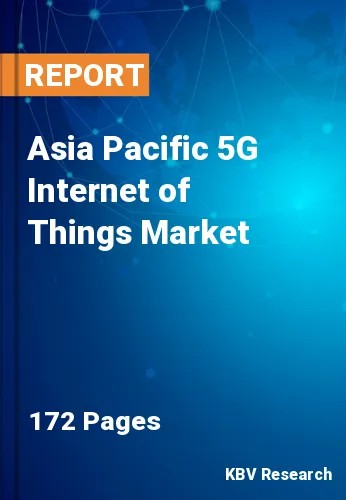The Asia Pacific 5G Internet of Things Market would witness market growth of 70.0% CAGR during the forecast period (2024-2031).
The China market dominated the Asia Pacific 5G Internet of Things Market by Country in 2023, and would continue to be a dominant market till 2031; thereby, achieving a market value of $52,497.4 million by 2031. The Japan market is registering a CAGR of 68.9% during (2024 - 2031). Additionally, The India market would showcase a CAGR of 71.2% during (2024 - 2031).

The adoption of Industrial 5G is accelerating as organizations recognize its potential to transform operations and drive competitive advantage. Manufacturing, logistics, and healthcare increasingly require real-time data processing and communication. Industrial 5G's ultra-low latency (as low as 1 millisecond) enables applications like autonomous vehicles and robotic systems to function effectively, driving adoption across sectors reliant on rapid decision-making.
The Internet of Things (IoT) expansion is a primary driver for the adoption of Industrial 5G. Companies are investing heavily in IoT devices that require seamless connectivity and high bandwidth, making Industrial 5G a critical enabler for smart factories and connected ecosystems. Industrial 5G supports edge computing, allowing data processing closer to the source rather than relying solely on centralized cloud computing. This reduces latency and bandwidth usage while enabling real-time analytics, empowering businesses to make quicker and more informed decisions based on actionable insights.
The demand for 5G IoT in Australia has been significantly influenced by the development of smart cities. The "Smart Cities and Suburbs Program" of the Australian government has provided funding for a variety of initiatives that integrate 5G and IoT solutions for urban development. According to the Department of Infrastructure, Transport, Regional Development, and Communications, cities like Melbourne and Sydney have implemented smart lighting, traffic management systems, and environmental monitoring using 5G connectivity. The introduction of 5G has allowed these cities to manage traffic flow in real-time, reducing congestion and improving public transport efficiency. Hence, the diverse applications of 5G IoT, ranging from smart city projects to industrial automation and connected devices, are helping the Asia-Pacific region position itself as a leader in adopting and developing next-generation IoT solutions, contributing significantly to market growth.
Free Valuable Insights: The Global 5G Internet of Things Market is Predict to reach USD 474.4 Billion by 2031, at a CAGR of 69.3%
Based on Offering, the market is segmented into Solutions (Hardware and Software & Platform) and Services. Based on Enterprise Size, the market is segmented into Large Enterprises and Small & Medium Enterprises. Based on Network Type, the market is segmented into 5G Non-Standalone and 5G Standalone. Based on End User, the market is segmented into Manufacturing, Energy & Utilities, Transportation & Logistics, Healthcare, Agriculture, Government & Public Safety, and Others. Based on countries, the market is segmented into China, Japan, India, South Korea, Singapore, Malaysia, and Rest of Asia Pacific.
By Offering
By Enterprise Size
By Network Type
By End User
By Country
Our team of dedicated experts can provide you with attractive expansion opportunities for your business.

